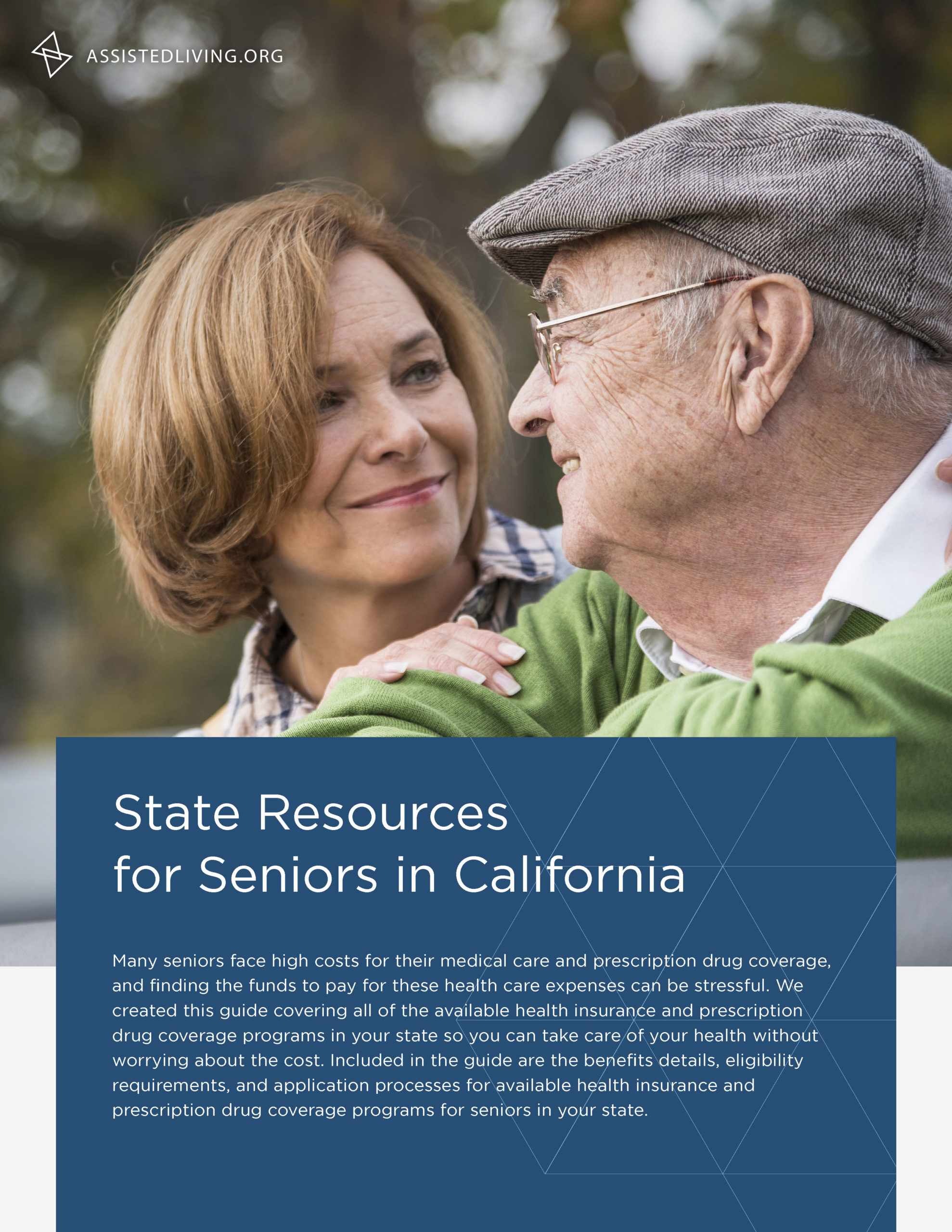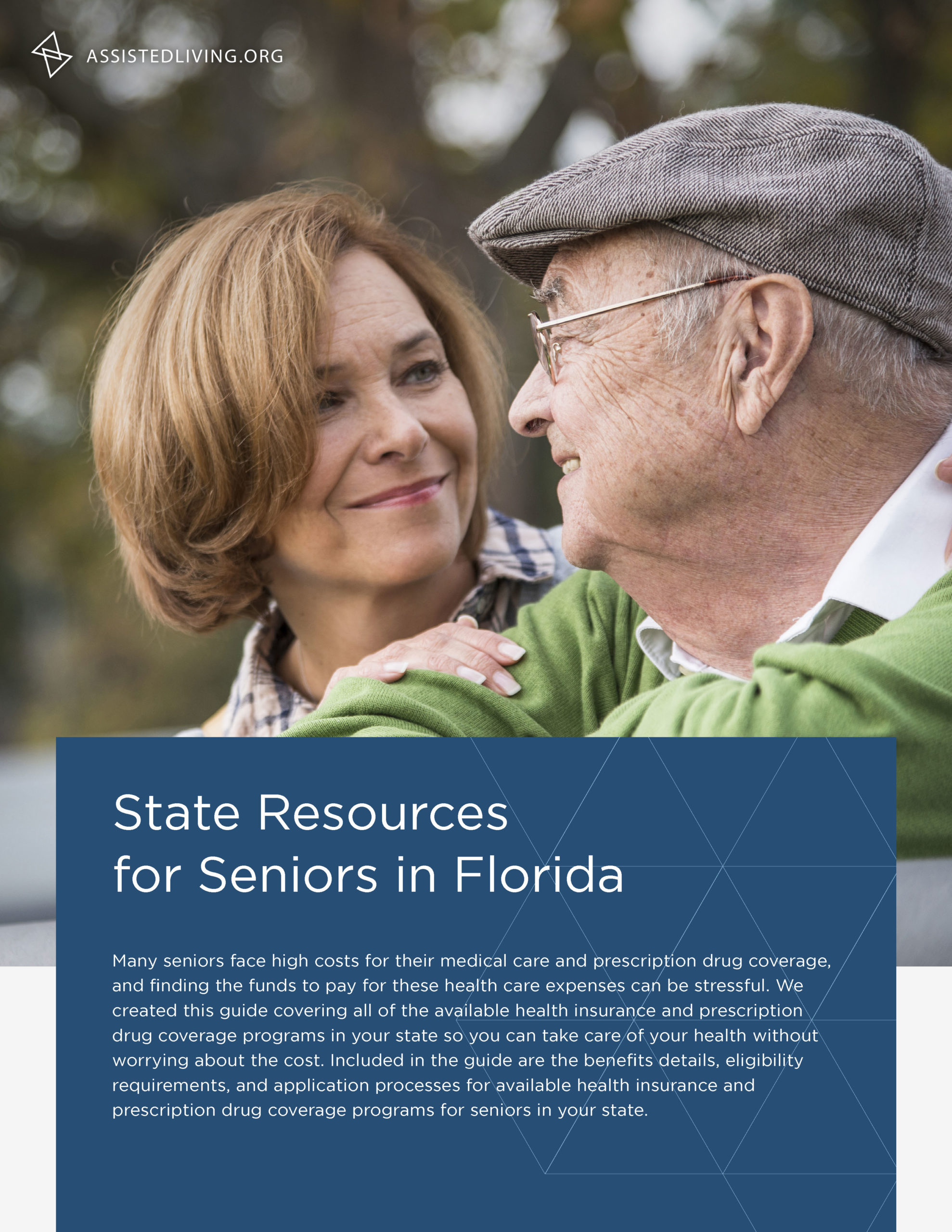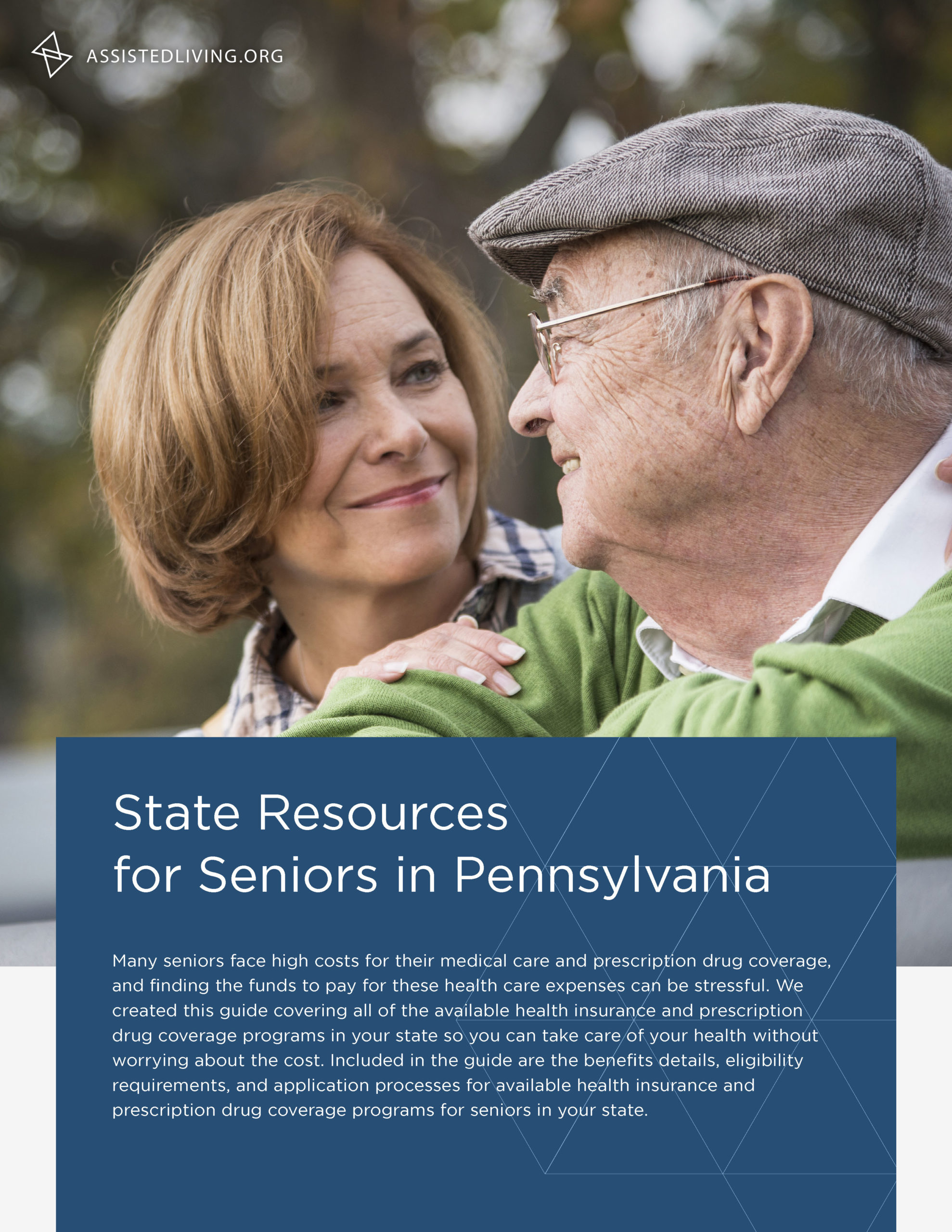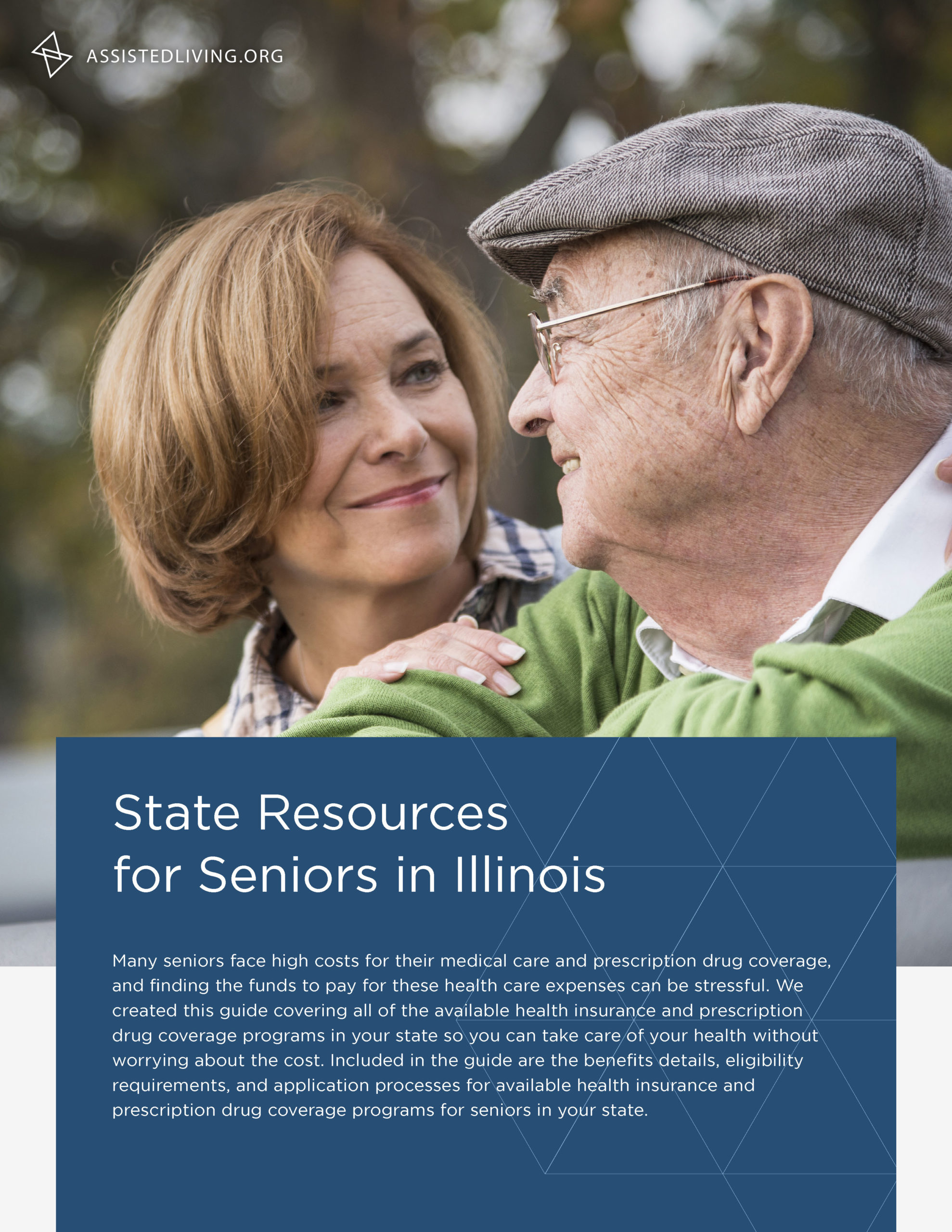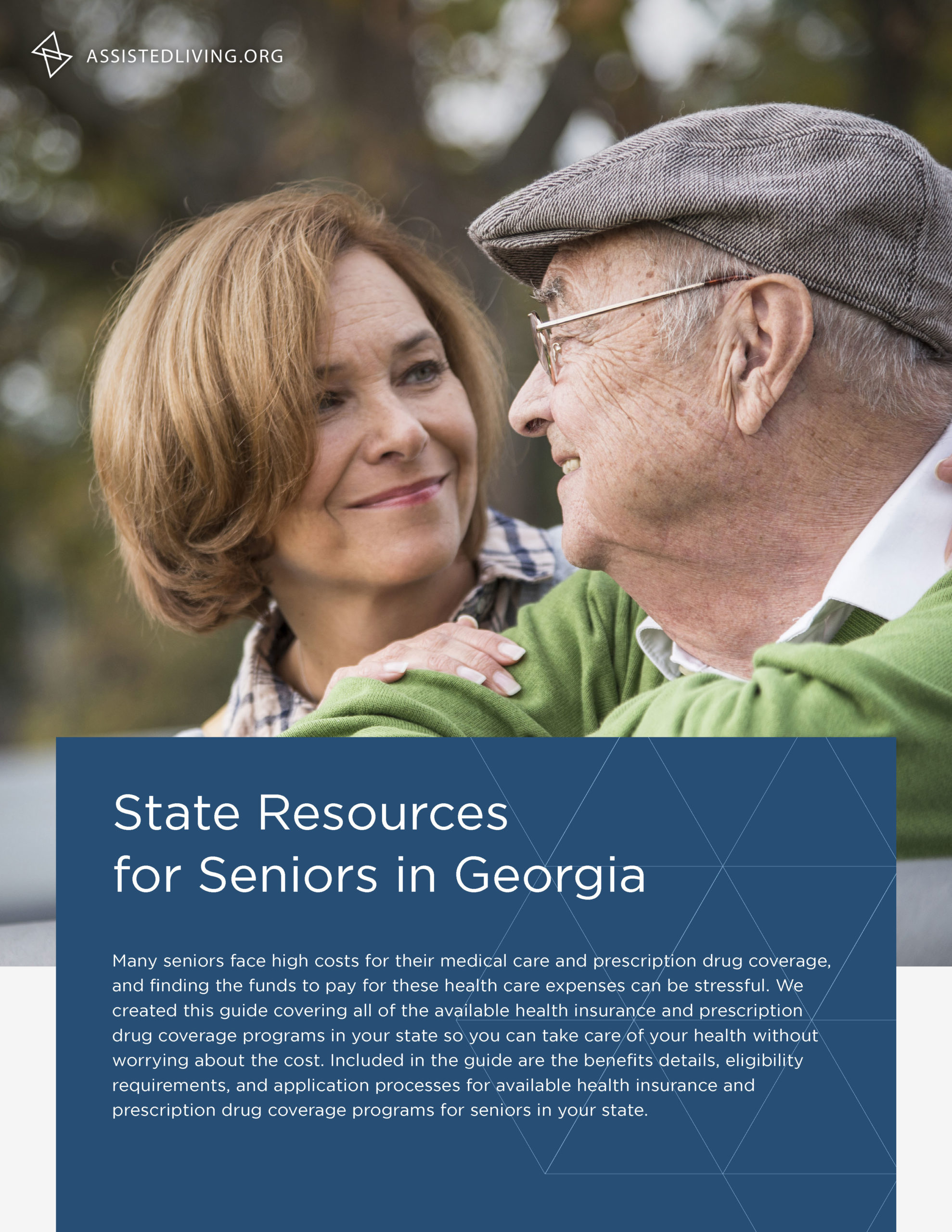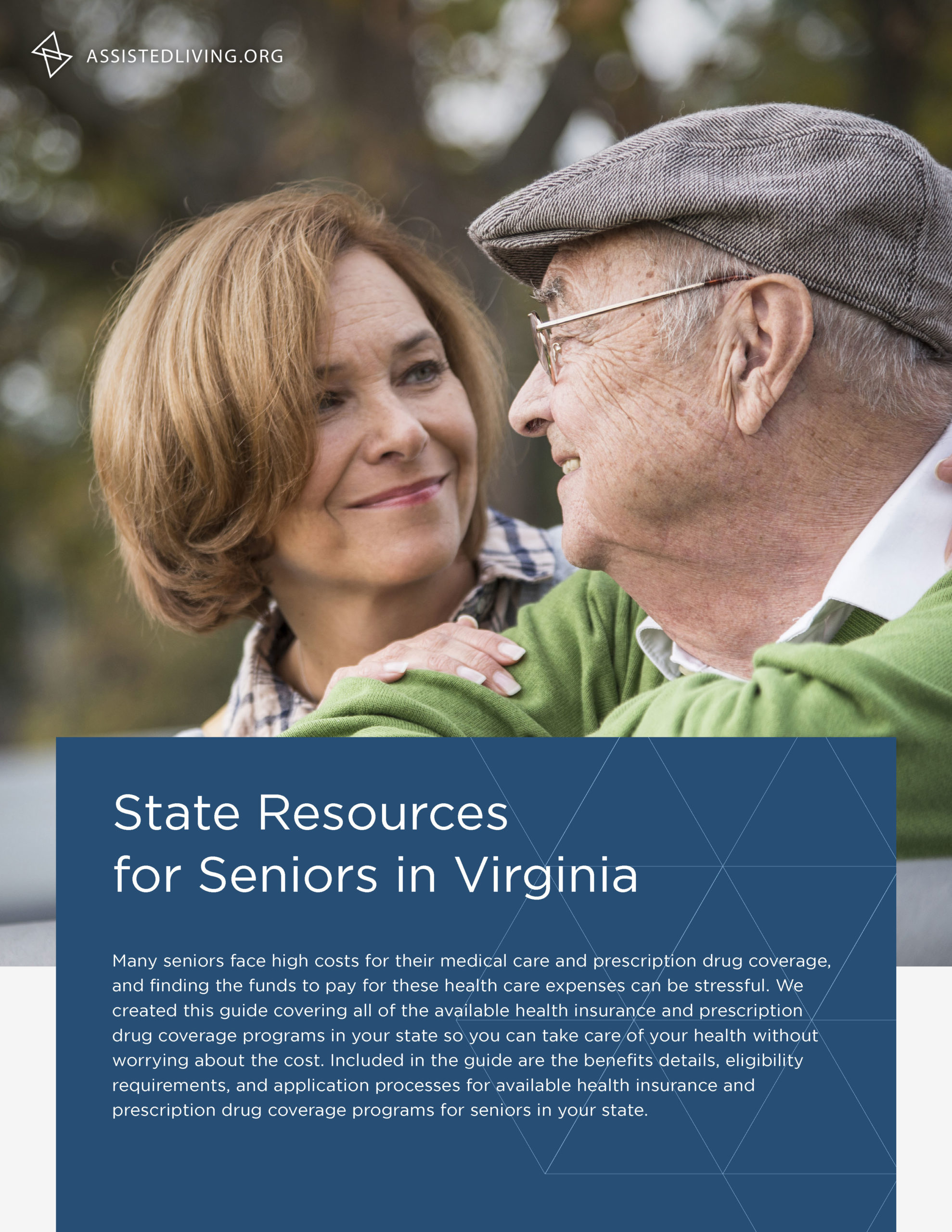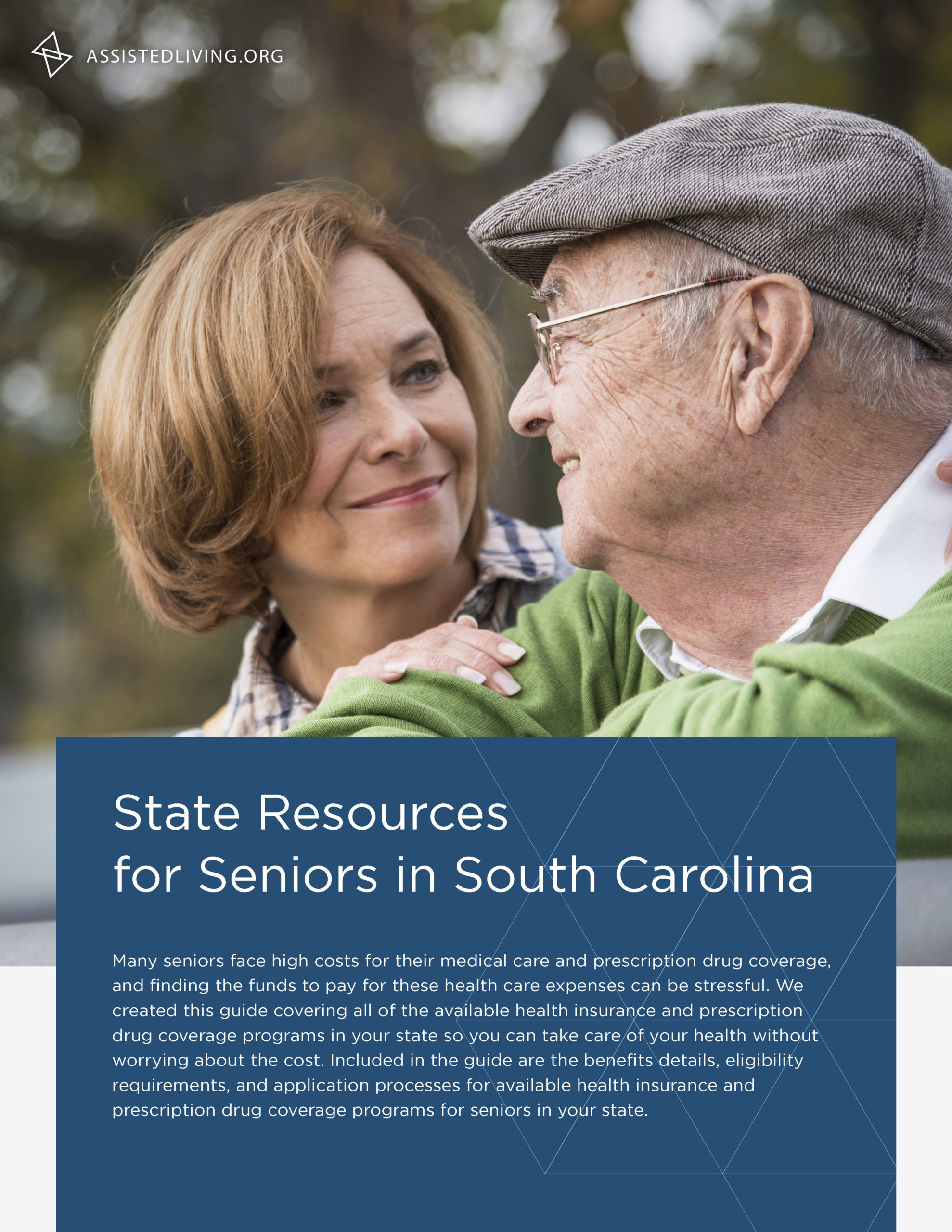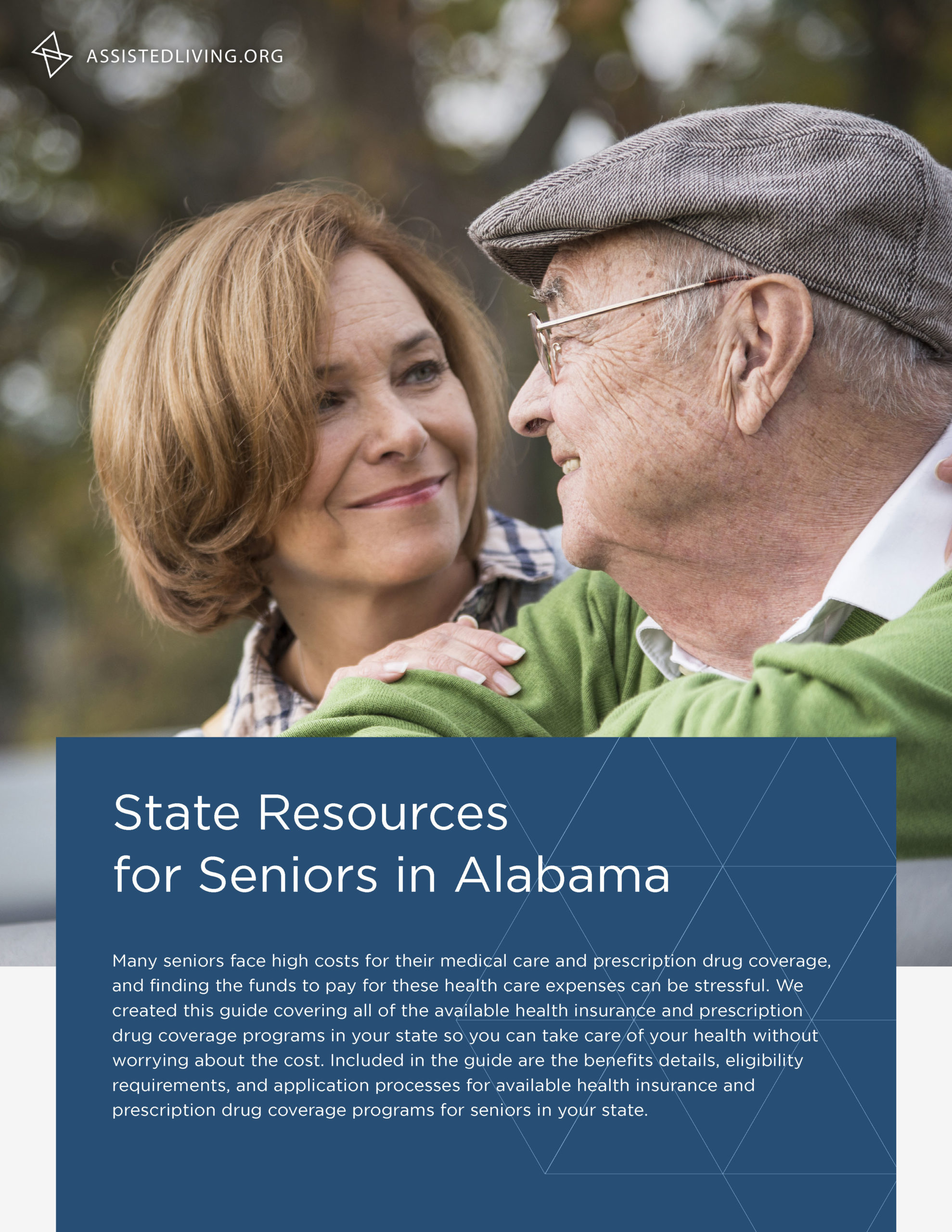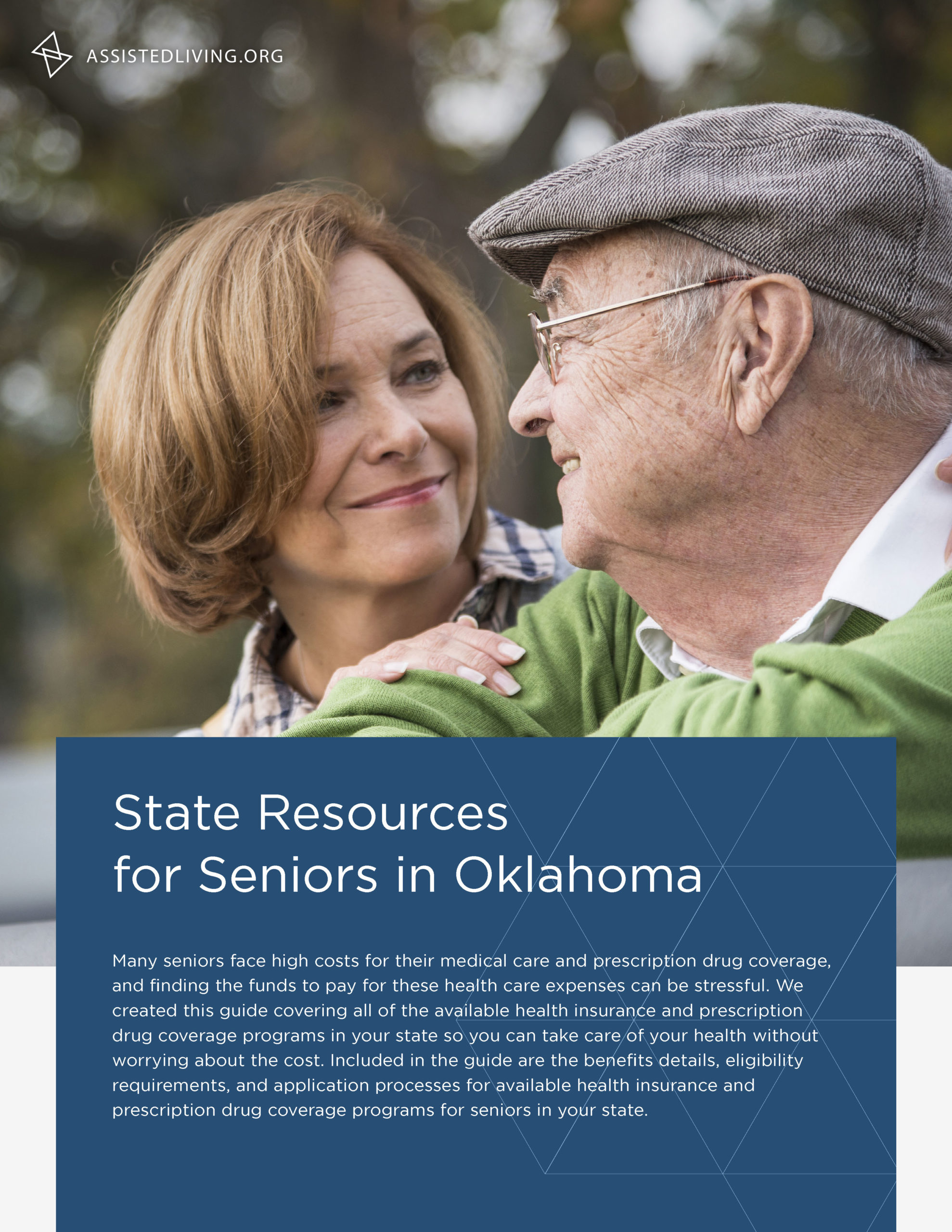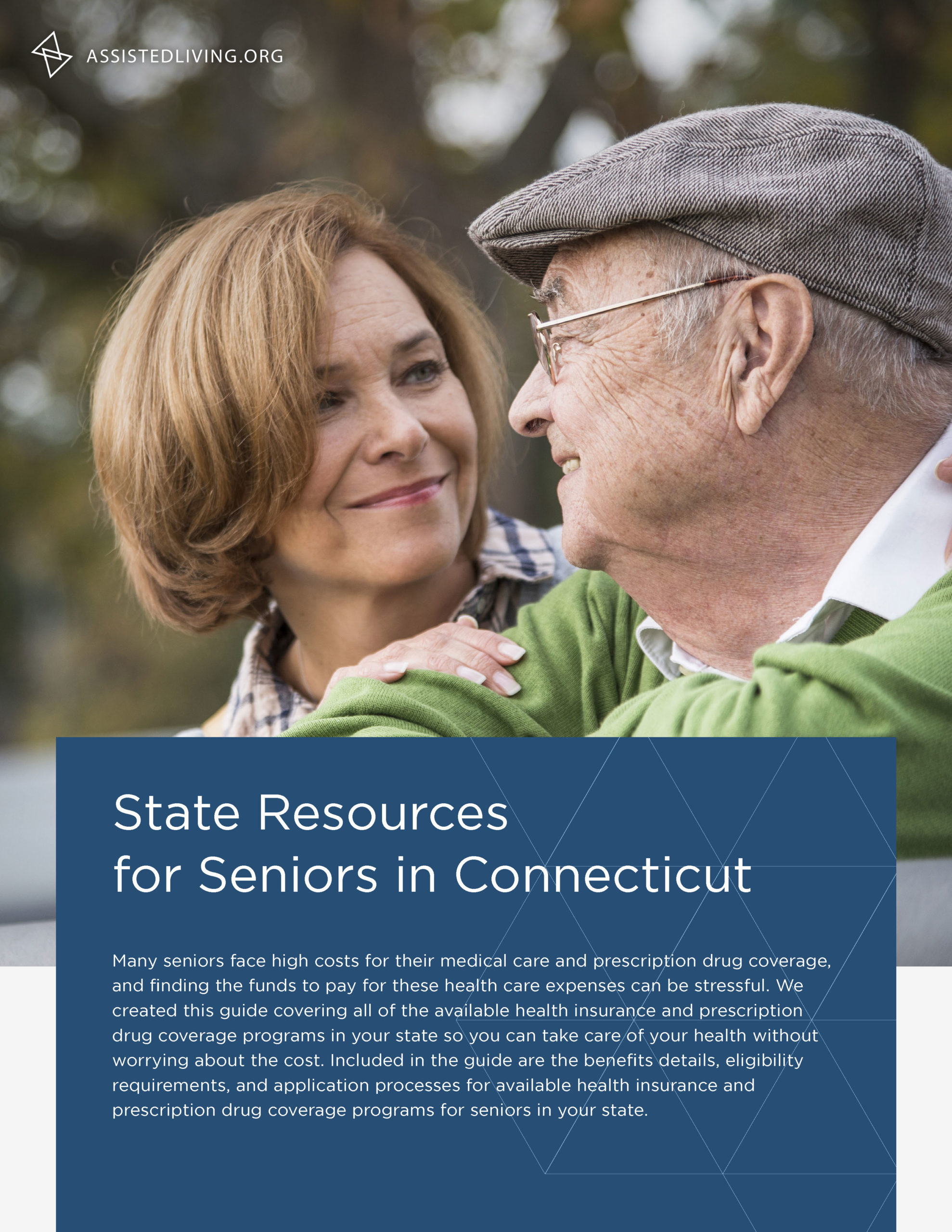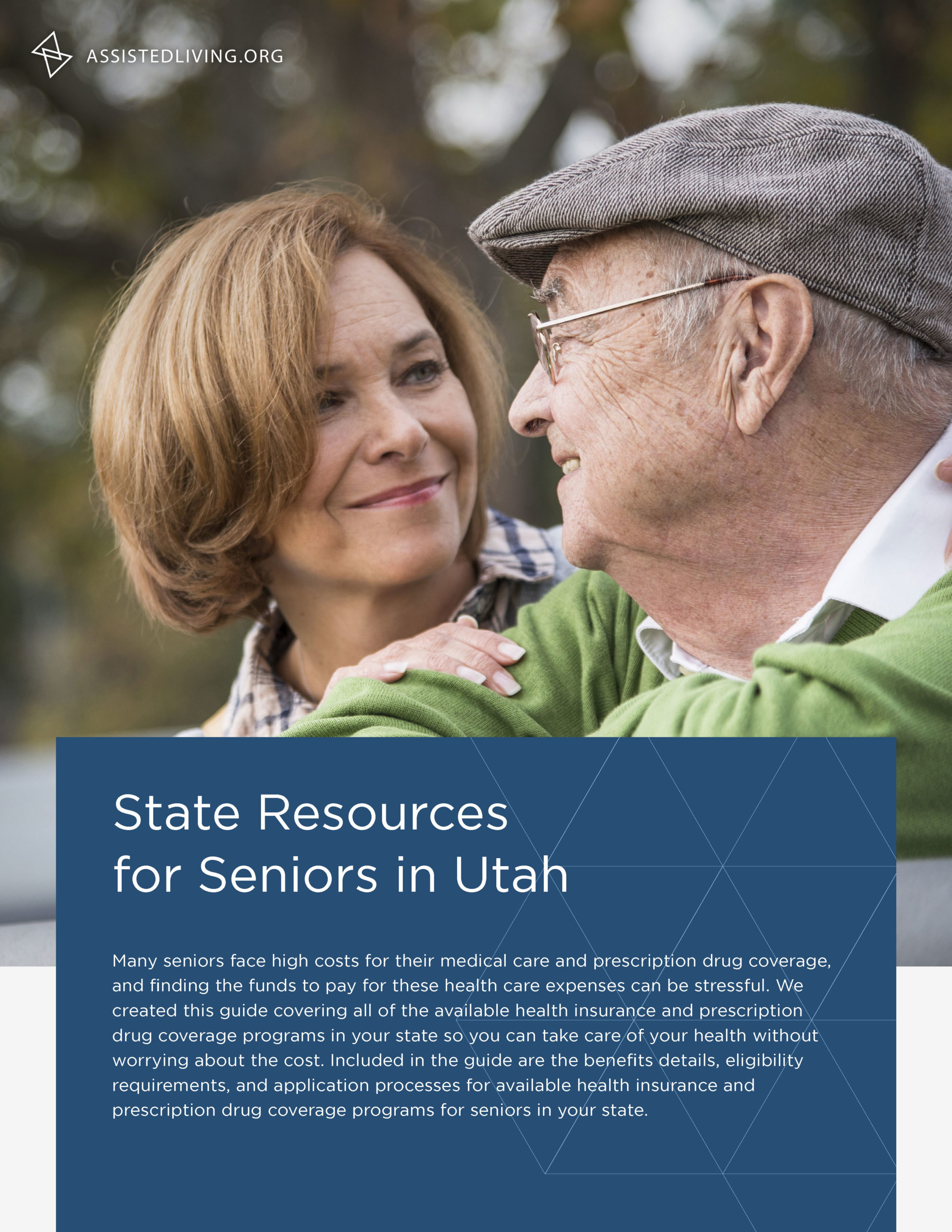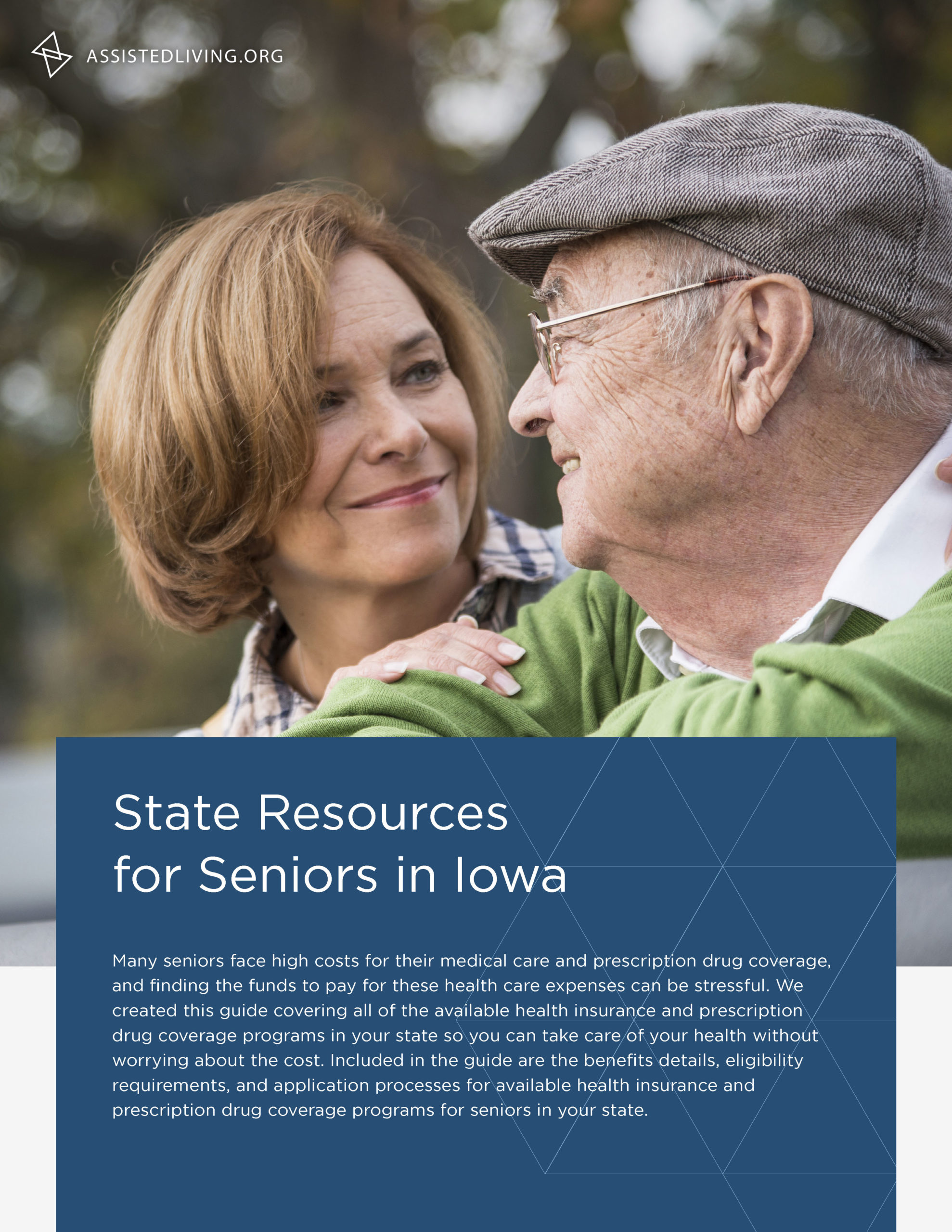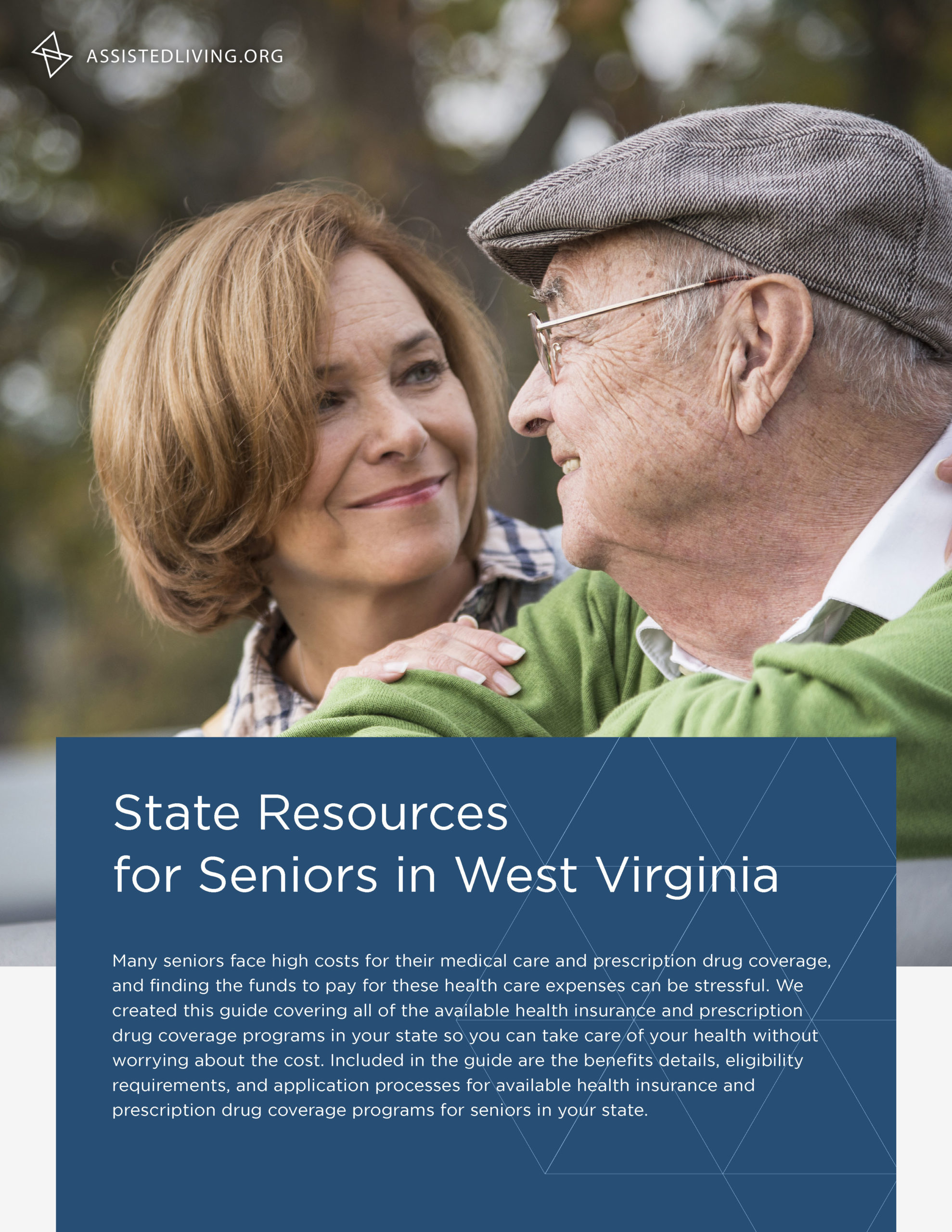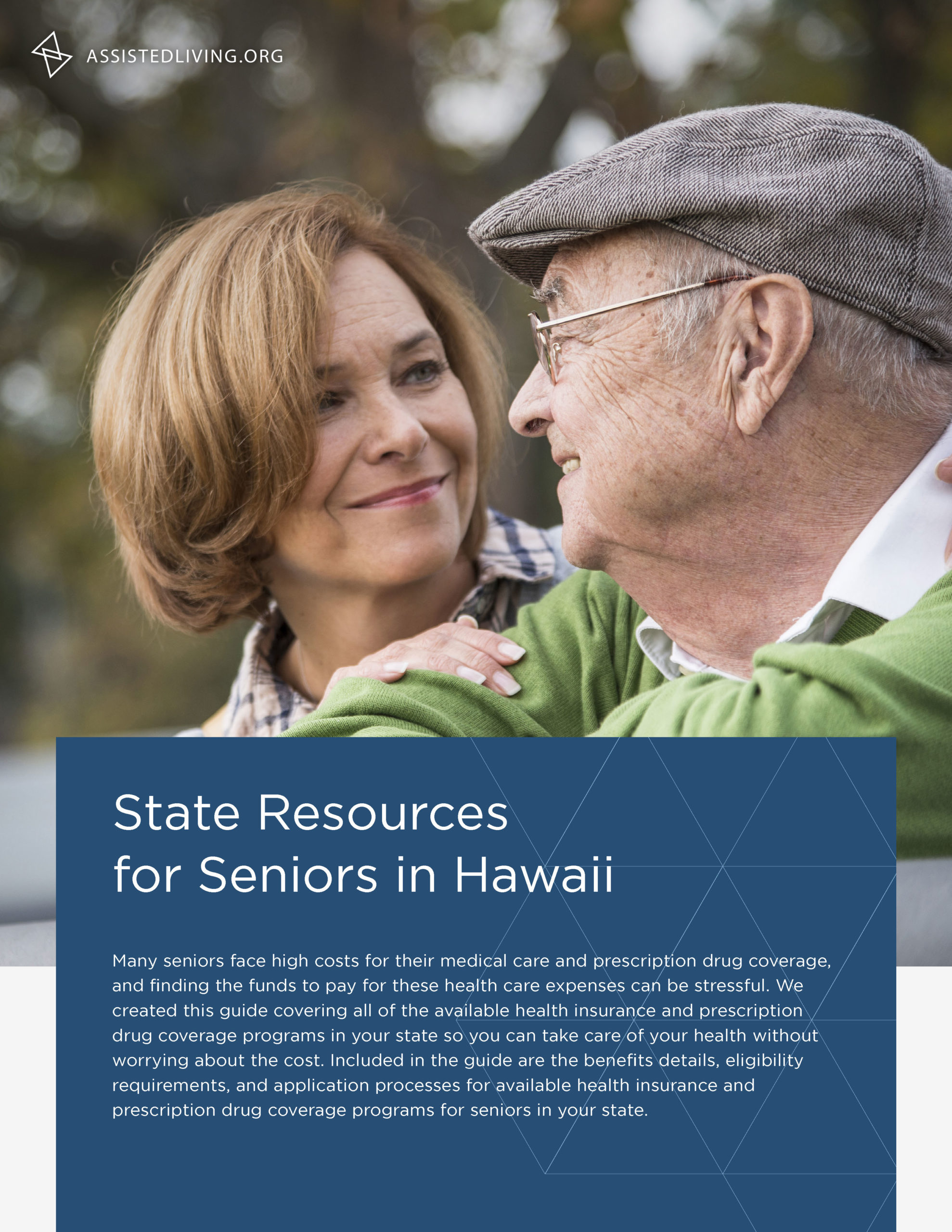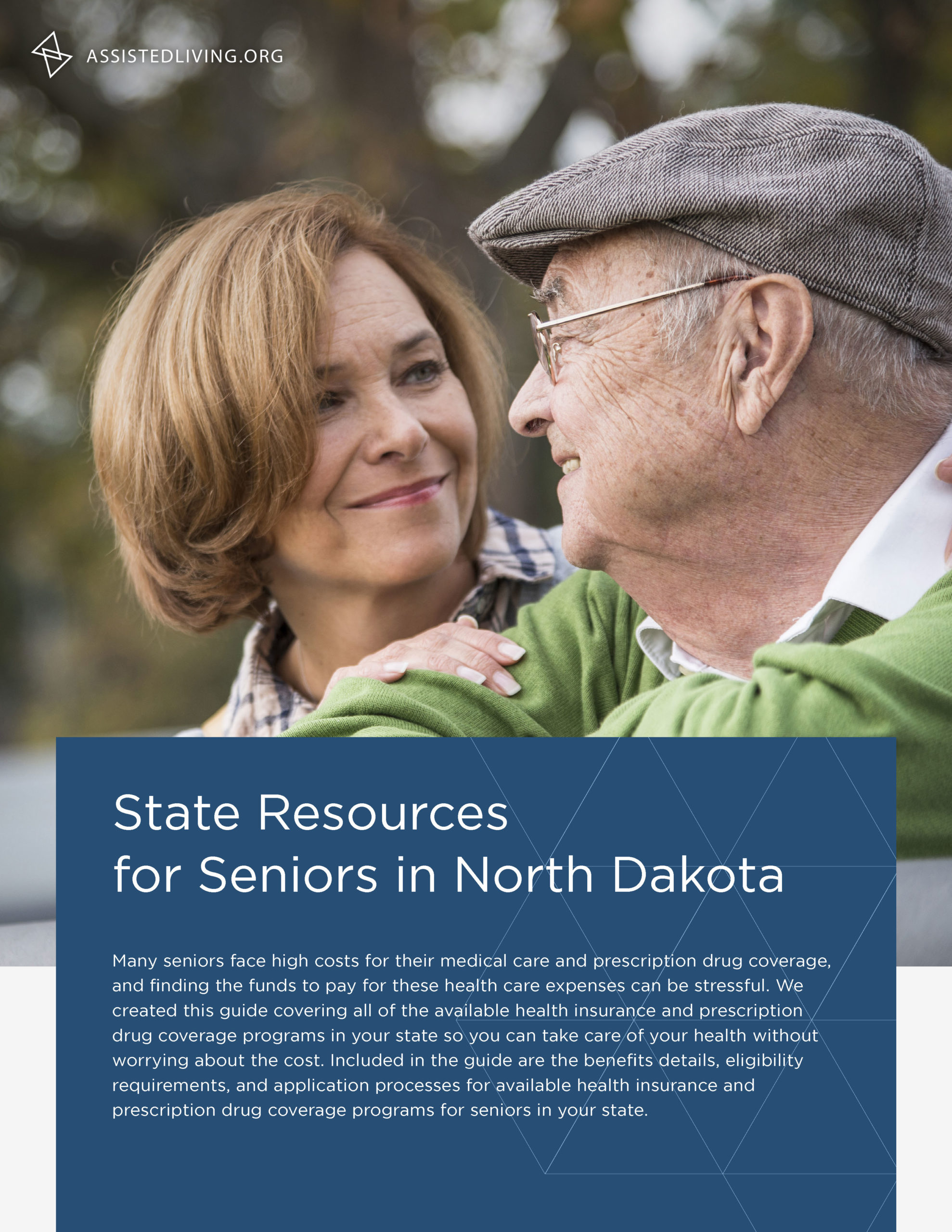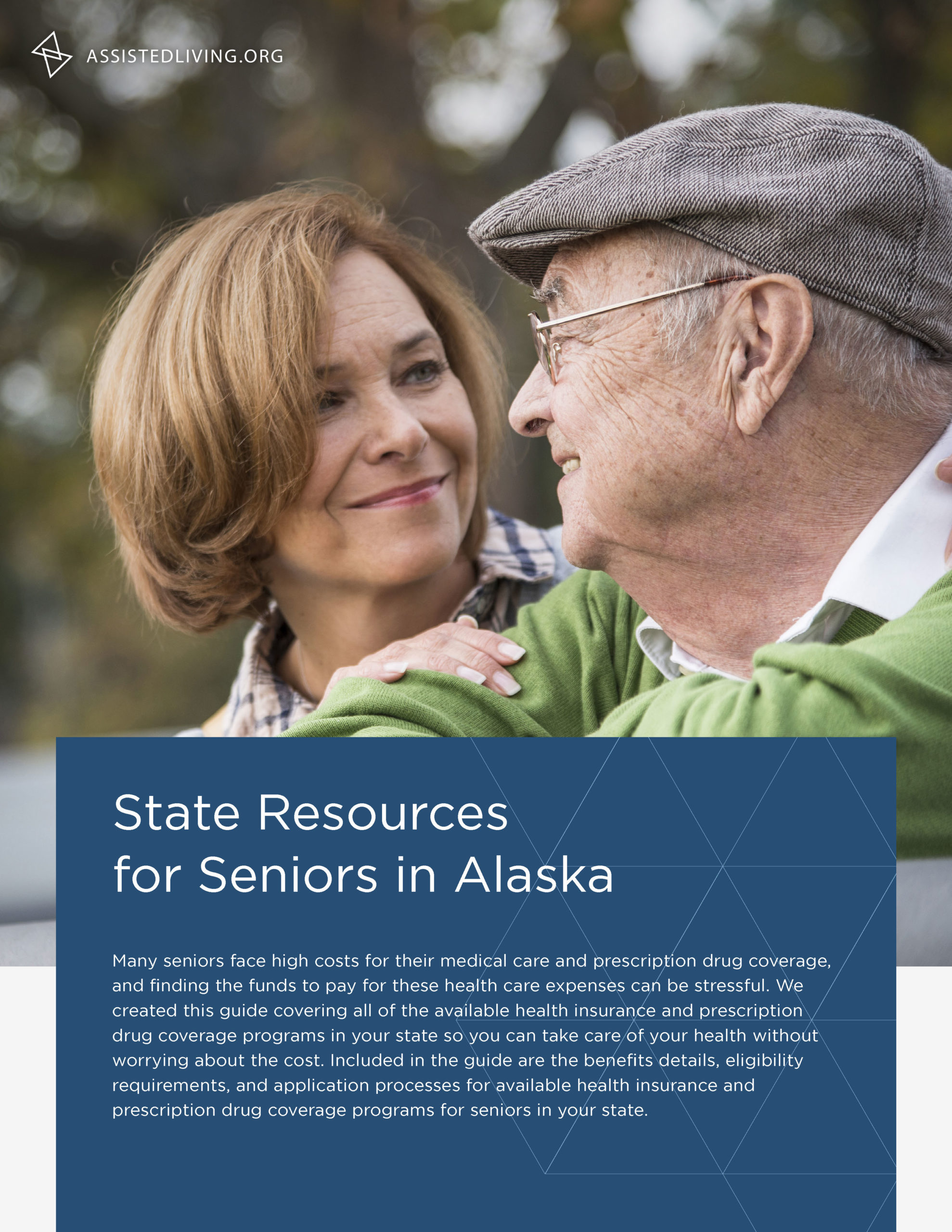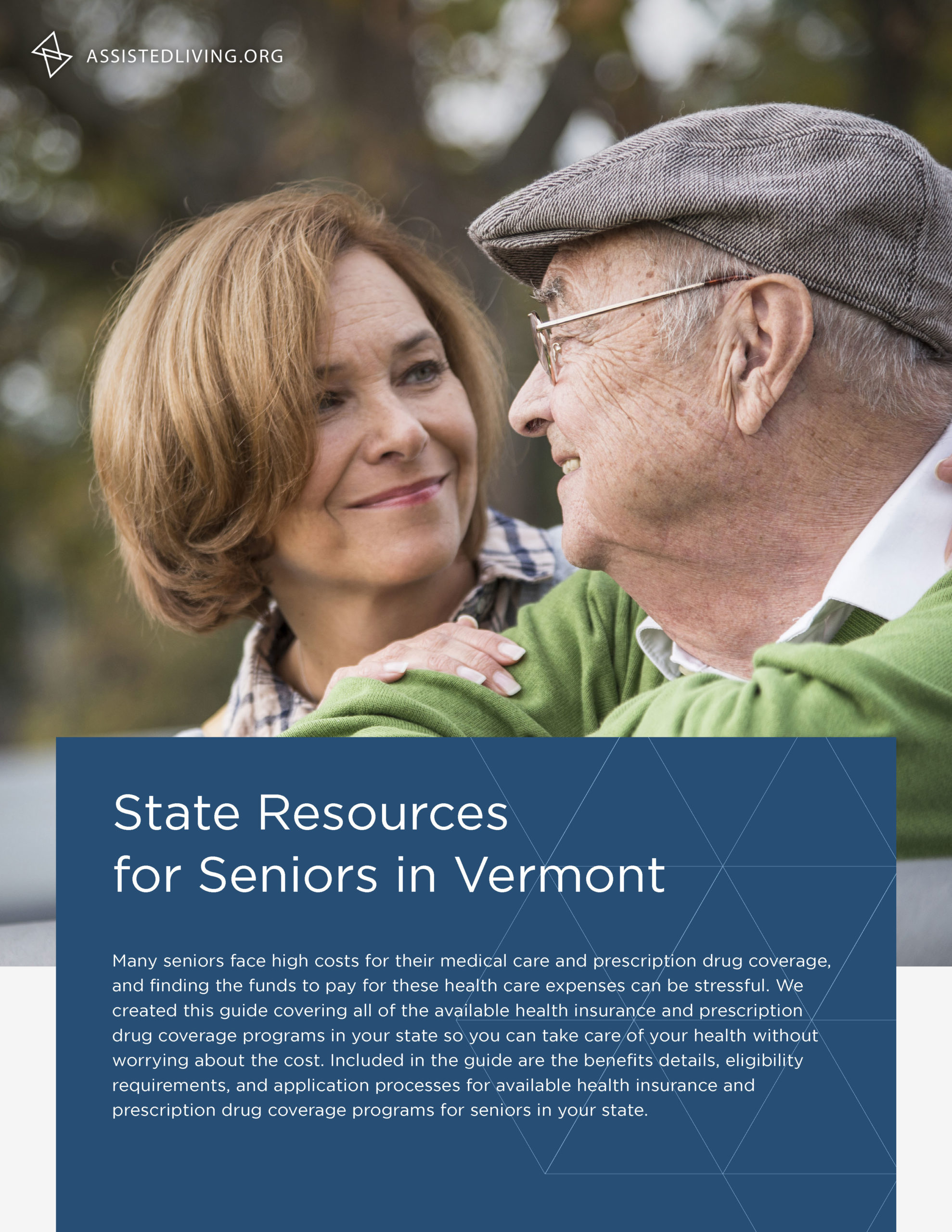Find Assisted Living in Your Area

Many seniors live on a fixed income, making it difficult to pay for expenses. This is even more of a challenge during times of inflation, when costs increase but the amount of money seniors have coming in remains the same. In recent years, this has caused seniors across the country to struggle financially.
The U.S. Census Bureau found that over 17 million older adults were economically insecure in 2022, with an income below 200% of the federal poverty level. Further, as of June 30, 2023, nearly 90% of people aged 65 and older received Social Security benefits according to the Social Security Administration. Although the Social Security program has a built-in cost-of-living adjustment, the benefit amount only increases once a year, so many seniors continue to face financial pressure. When inflation impacts seniors’ spending power, it makes it more difficult for them to pay for housing, food, medicine and other necessities. Thankfully, there are a number of government programs available to help seniors afford these expenses.
This guide provides information on a variety of financial resources to help you pay for necessities, such as health care, groceries and utilities. In addition to national resources designed to help seniors and other low-income people, you can find information about state programs that may assist you.
Utility Assistance Programs
Utility bills can be a large portion of a senior’s monthly expenses. The federal government has programs that can help you pay these bills and make your home more energy efficient.
| Program Name | Website | Description |
| Low Income Home Energy Assistance Program | acf.hhs.gov | Helps low-income households pay for heating and cooling. |
| Low Income Household Water Assistance Program | acf.hhs.gov | Helps low-income households pay their water and wastewater bills. |
| Weatherization Assistance Program | energy.gov | Makes improvements to the homes of low-income residents that can permanently reduce utility bills. |
Low Income Home Energy Assistance Program (LIHEAP)
The Low Income Home Energy Assistance Program (LIHEAP) is a federally funded program that helps eligible households pay their energy costs and also covers emergency crises, weatherization and energy-related home repairs. The program is administered at the state and tribal level, which means there is variation in the amounts and types of benefits available.
Most jurisdictions offer to pay one heating or cooling bill each year. For heating, this can be an electricity bill or the bill from a heating fuel vendor. In hotter states, the grant is typically used for electricity bills during months with high air conditioner use.
Emergency assistance may be available for households that have had, or are at risk of having, their electricity shut off. This assistance may also pay for repairs, such as for a broken furnace.
States receive a limited amount of money for this program, and in some areas there may be a waiting list for assistance.
Who Is Eligible?
The annual household income limits to qualify for the LIHEAP program vary by state or tribal territory. However, these limits must be a minimum of 110% of Federal Poverty Guidelines and a maximum of either 150% of Federal Poverty Guidelines or 60% of the state’s median income (depending on which one of these values is greater). In some areas, you may also have to provide a final notice bill to qualify.
How to Apply
Use the LIHEAP Office Search Tool to contact representatives of your state or territory’s LIHEAP program to learn about the application process. Those located in tribal regions can also use a LIHEAP Office Search Tool specific for tribes to find contacts who can provide application information.
Alternatively, you can call the National Energy Assistance Referral (NEAR) project at 1–866-674-6327 Monday through Friday, 7am to 5pm MST to find out where you can apply for the LIHEAP program. Emailing the National Center for Appropriate Technology at [email protected] will also provide you with answers to your LIHEAP application questions.
Low Income Household Water Assistance Program (LIHWAP)
The Low Income Household Water Assistance Program (LIHWAP) helps low-income households pay for their water and wastewater bills. As with LIHEAP, application processes and benefits can differ depending on your location. Possible uses of program funding include restoring disconnected services, preventing disconnection by covering past due bills, and reducing the rates for current accounts. The program generally pays benefits directly to water or wastewater companies on behalf of program applicants.
Though currently still in effect, this program was intended to be a temporary response to COVID-19 and funding was set to expire at the end of 2023. However, grant recipients have the option to request a 6-month extension of the program until March of 2024, and therefore some state agencies may still be accepting applications beyond the original 2023 end date. The federal government’s long-term plan is to increase LIHEAP funding in favor of continuing the LIHWAP program, giving states the choice to use a portion of these funds to provide water bill assistance to their residents, according to White House budget documents.
Who Is Eligible?
The program is available to low-income households that meet the state’s income limit, which can’t be greater than 150% of the federal poverty line or 60% of the statewide median income. States may have additional eligibility criteria or prioritize applicants to ensure that those with the greatest need receive help first.
How to Apply
Contact your local agency to learn if applications are still being accepted and what the application process is in your state.
Weatherization Assistance Program (WAP)
Although the Weatherization Assistance Program (WAP) isn’t strictly a utility assistance program, it can help lower your utility bills. The program helps low-income households make their home more energy-efficient by adding insulation, caulking doors and windows, repairing inefficient appliances and more.
This program is administered by individual states, territories, and tribes so benefits and eligibility differs. This allows providers to focus on the needs of the local community.
Who Is Eligible?
The main eligibility criteria for WAP is income. Applicants must have an income at or below 200% of the federal poverty level, or receive Supplemental Security Income.
States can also choose to define eligible income as 60% of the state-median income. Those receiving SSI benefits may automatically qualify.
Priority is given to older adults, people with disabilities, families with children, and households that use high amounts of energy or have a high energy burden. The program is open to both homeowners and renters. However, renters must pay for the costs of heating and cooling, either through direct billing or by the inclusion of these costs in their rent, to be eligible.
How to Apply
Contact your local agency for information on the application process. You will have to provide proof of income, such as Social Security benefit payments.
Tax Credits and Deductions for Senior Citizens
The government offers a number of credits and deductions that can help lower the income tax burden for older residents. The extra money you receive in your tax refund can help you pay for housing, nutrition, health care expenses and more.
| Program Name | Description |
| Earned Income Tax Credit | A tax break for low-to-moderate earners. |
| Credit for the Elderly or the Disabled | A tax credit for people aged 65 and older and those with a total and permanent disability. |
| Standard Deduction for Seniors | A higher standard deduction for people aged 65 and over. |
| Medical and Dental Expenses Deductions | Itemized deductions for people with high medical and dental expenses |
Earned Income Tax Credit (EITC)
The Earned Income Tax Credit (EITC) provides a tax break to low- and moderate-income people as long as they earned income during the tax year. If applying without a dependent child, at least one spouse must be between the age of 25 and 65. It’s important to note that this credit is only available to people who worked; Social Security or other retirement income doesn’t qualify. In addition, EITC refunds cannot legally be issued until mid-February, so your entire refund (not just the EITC portion) may be delayed if you claim this tax break.
For the 2023 tax year, a credit of up to $600 is available to people without children. The credit increases up to $7,430 for those with dependent children. Seniors raising grandchildren may qualify for the higher amount if the children are claimed as dependents on their tax return.
Who Is Eligible?
To be eligible for the EITC, you must meet the following qualifications:
- Have worked
- Earned less than the income limit
- Have less than $10,300 in investment income (for the 2022 tax year)
- Be a U.S. citizen or resident alien for the full year
- Have a valid Social Security number
People without a dependent child must also have their main home in the United States for more than half the year and either they or their spouse must be between the age of 25 and 65.
How to Apply
The EITC is claimed on your federal tax return Form 1040. You can also use Form 1040-SR if you are at least 65 years old and would like a form with larger type and boxes. If you’re claiming a dependent child, you must also file Schedule EIC Form 1040 or 1040-SR.
Credit for the Elderly or the Disabled
The Credit for the Elderly or the Disabled provides a tax credit for older adults and people with certain disabilities. The amount of the credit ranges from $3,750 to $7,500.
Who Is Eligible?
People who are aged 65 or older at the end of the tax year and meet the income limits are eligible for the credit.
People under age 65 may be eligible if they meet all the following qualifications:
- Retired on total and permanent disability
- Received taxable disability income during the year
- Had not reached mandatory retirement age by the beginning of the tax year
The credit is only available to U.S. citizens and resident aliens. More information about income limits and eligibility criteria can be found on the IRS website.
How to Apply
To apply for the credit, fill in Schedule R and submit it with your tax return.
Standard Deduction for Seniors
The standard deduction allows you to claim a specific amount rather than itemizing deductions. If this amount is more than your total allowable itemized deductions, it may result in a larger tax refund. A higher standard deduction is available to taxpayers who are aged 65 and older.
Who Is Eligible?
If you’re aged 65 or older at the end of the tax year, you can claim the senior’s standard deduction amount. If you’re younger but your spouse is at least 65 years old, you may also be eligible for the higher standard deduction. Younger individuals who are permanently and totally disabled may qualify as well.
You can’t take the standard deduction if:
- You’re married and file separately from your spouse, and they itemize deductions
- You’re filing for a short tax year
- You’re a nonresident or dual-status alien during the tax year
How to Apply
You can choose whether to claim the standard deduction or itemize your deductions when completing your tax return. You can use Worksheet 4-1 to determine your standard deduction.
Medical and Dental Expenses Deduction
People who itemize their deductions may be able to deduct medical and dental expenses paid for themselves, their spouse and dependents. Such expenses can include the cost of diagnosis, cure, mitigation, treatment or prevention of disease. They can also include payments for treatments that affect the structure or function of the body.
Who Is Eligible?
All taxpayers are eligible to deduct medical and dental expenses on their tax returns. However, you can only deduct the portion of these expenses that exceeds 7.5% of your adjusted gross income. Further, certain expenses don’t qualify for the deduction, including:
- Funeral or burial costs
- Nonprescription medicines
- Toothpastes, toiletries and cosmetics
- Most types of cosmetic surgery
- A trip or program that’s intended to improve your general health
How to Apply
You can use Schedule A to calculate whether you can claim a medical and dental expense deduction when completing your federal tax return. If you choose to claim the deduction, you’ll need to provide proof of your expenses.
Health Insurance, Medical Expense and Drug Cost Assistance

In addition to Medicare and Medicaid, the federal government has programs that can help you pay for medical expenses. The cost of premiums, medications, deductibles and more may be offset or eliminated with these programs.
| Program Name | Website | Description |
| Medicare Savings Programs | medicare.gov | Helps pay Medicare premiums, deductibles, coinsurance and co-payments. |
| Medicare Extra Help Program | medicare.gov | Helps pay Medicare drug coverage (Part D) premiums, deductibles, coinsurance and other costs. |
| BenefitsCheckUp | benefitscheckup.org | Identifies federal, state and local benefits you may be eligible for. |
Medicare Savings Programs
Medicare Savings Programs can help pay your premiums for Medicare Parts A and B. These programs may also pay your deductibles, coinsurance and co-payments. There are four types of Medicare Savings Programs, each with slightly different eligibility requirements and benefits:
- Qualified Medicare Beneficiary (QMB) Program: Helps pay for Part A and B premiums, deductibles, coinsurance and co-pays.
- Specified Low-Income Medicare Beneficiary (SLMB) Program: Assists with Part B premiums.
- Qualifying Individual (QI) Program: Helps pay Part B premiums.
- Qualified Disabled & Working Individual (QDWI) Program: Helps pay Part A premiums.
Who Is Eligible?
Eligibility for each program is based on an applicant’s income, resources and circumstances. Income limits differ depending on the program and your state, with Hawaii and Alaska having higher monthly limits than other states. All programs share the same resource limits, other than the QDWI program, with resource limits that are less than half as much as the other three programs.
To be eligible for the QDWI program, you must also be working, have a disability and no longer qualify for disability benefits and premium-free Medicare Part A because you returned to work. A limited number of participants are accepted into the QI program, and states approve applications on a first-come, first-served basis.
How to Apply
Medicare Savings Programs aren’t part of Medicaid, but they’re administered through the Medicaid offices in each state. To apply, contact your state’s Medicaid office.
Extra Help Program
The Extra Help program helps people with limited income pay for Medicare drug coverage (Part D), including premiums, deductibles, coinsurance and other costs. It’s also called the Medicare Part D Low Income Subsidy.
There are two levels of Extra Help. Full Extra Help pays all premiums and deductibles and limits the cost of prescription medicines. The 2023 limits are $4.15 for generic and $10.35 for brand-name drugs. These limits increase in 2024 to $4.50 for generic and $11.20 for name-brand drugs. Once the total drug costs paid by you and your plan reach $7,400 (or $8,000 starting in 2024), you pay nothing for your covered prescription medications.
As a beneficiary of Partial Extra Help, you’ll pay a premium based on your income. You’ll also pay a maximum deductible of $104 and no more than 15 percent of the cost of each covered prescription drug. Once the total drug costs paid by you and your plan reach $7,400 for the year, your prescription costs drop to $4.15 for generic and $10.35 for brand-name medications.
Who Is Eligible?
To qualify, applicants must have income and resources below the current program limits, which increase each year. For 2022, the limits are:
- An income of $21,870 and resources of $16,600 for an individual
- A total income of $29,580 and resources of $33,240 for a married couple
Once you’re approved for Extra Help, you receive it for the rest of the calendar year, even if your income changes.
How to Apply
You’re automatically enrolled in the Extra Help program if you:
- Have full Medicaid coverage
- Are enrolled in a Medicare Savings Program that helps pay your Part B premiums
- Receive Supplemental Security Income from Social Security
If you’re automatically enrolled, you’ll receive a letter about Extra Help. This will include information about any payments you’ll be responsible for and the Medicare drug plan you’ve also been enrolled in (if you’re not enrolled in one already).
If you’re not enrolled automatically, you can apply for Extra Help online through the SSA website or by calling Social Security at 800-772-1213.
BenefitsCheckUp
Operated by the National Council on Aging, BenefitsCheckUp is a comprehensive online tool that connects seniors with benefits programs they qualify for. Through the site, you can find federal, state and local programs to help you pay for health care, food, medicine, utilities and other expenses.
Who Is Eligible?
The programs listed on the BenefitsCheckUp site are specifically aimed at people aged 65 and over and those with disabilities. After entering your location information and selecting the type of benefits you’re looking for, you’ll see a list of matching programs. For each program, you will have the option to “view more info.” If you select this, you’ll be taken to a page with helpful information that may include links to apply online, check if you are eligible for the program, and/or visit the program website. At the bottom of the page, FAQs about the program will also usually include details about program eligibility requirements.
How to Apply
Enter your ZIP code on the BenefitsCheckUp homepage and then choose a category of benefits to search for programs that meet your needs. Then, click on the “view more info” option for the program to view a page that covers application information and may even include a link to apply to the program. It will also provide a contact you should reach out to in the Frequently Asked Questions section. Depending on your location, you may also be able to connect with a Benefits Enrollment Center counselor who can help you identify and apply for available programs.
Nutrition Assistance Programs

Nutrition assistance programs help seniors obtain groceries. They may also provide prepared meals through home delivery or in group settings.
| Program Name | Description |
| Supplemental Nutrition Assistance Program | Provides benefits that help low-income residents purchase food. |
| The Emergency Food Assistance Program | The USDA provides nutritious food to state agencies for distribution to low-income residents at no cost. |
| Seniors Farmers’ Market Nutrition Program | Provides low-income seniors with benefits to purchase fresh fruit, vegetables, herbs and honey from local producers and markets. |
| Meals on Wheels | Delivers prepared meals to homebound seniors and people with disabilities. |
Supplemental Nutrition Assistance Program (SNAP)
The Supplemental Nutrition Assistance Program (SNAP) provides benefits to help low-income households purchase healthy foods. Participants receive an Electronic Benefits Transfer (EBT) card, and benefits are loaded automatically each month. This card can be used like a debit card at authorized food stores and retailers.
Your EBT card can only be used to purchase grocery items. SNAP benefits can’t be used to buy alcohol, tobacco, vitamins, medicines, food that’s hot at the point of sale and nonfood items such as pet food and cleaning supplies. However, with SNAP benefits helping pay for food, you’ll have more discretionary funds available for your other needs.
Who Is Eligible?
Applicants must meet income and resource limits to be eligible for SNAP benefits. Limits are higher for households with at least one member who’s aged 60 and older or disabled. Certain assets aren’t considered as resources, including most retirement and pension plans (withdrawals from these may count as income or resources, however).
For households with a senior member, the 2023 resource limit is $4,250. Income limits depend on your household size and are higher in Alaska and Hawaii. SNAP has both gross and net monthly income limits. Your gross income is your total income before making any deductions. Your net income is your gross income minus allowable deductions. Households with a senior member only need to meet the net monthly income limit, which is $1,215 for an individual and $1,644 for a couple through September 30, 2024.
How to Apply
SNAP applications are managed by state agencies. Contact your local agency for information on how to apply.
The Emergency Food Assistance Program (TEFAP)
The Emergency Food Assistance Program (TEFAP) supplements the diets of low-income residents by supplying free emergency food items. The U.S. Department of Agriculture purchases nutritious foods and provides them to states for distribution to local agencies along with administrative funds to cover the costs of program operation.
Much of this USDA food goes to food banks where it is redistributed to organizations that directly serve the public, such as soup kitchens and food pantries. Food also goes to local community action agencies which either give it to low-income individuals for in-home use or prepare and serve it to low-income individuals in congregate settings.
Who Is Eligible?
Because TEFAP resources are distributed to states and local organizations, eligibility requirements can differ. To receive items from food pantries in most locales, you usually have to meet the state’s income limits. Eligibility in some states may depend on whether you receive other income-based benefits.
How to Apply
Contact your state’s distributing agency to find out how to apply and where TEFAP foods are available in your local area.
Seniors Farmers’ Market Nutrition Program (SFMNP)
The Senior Farmers’ Market Nutrition Program (SFMNP) helps seniors access locally grown fruits, vegetables, honey and herbs. It also helps local farmers and aids in developing new outlets for the sale of local produce.
The program works by issuing coupons or checks to participants. These can be redeemed for eligible items from authorized farmers, farmers’ markets, roadside stands and community-supported agriculture (CSA) programs. These businesses then submit redeemed SFMNP coupons to the bank or the state agency operating the SFMNP program for reimbursement.
Who Is Eligible?
The program is available to people aged 60 and older who meet the income guidelines. Currently, the income limit is 185% of the federal poverty level. Some states accept participation in another income-based benefit program, such as SNAP, as proof of eligibility.
How to Apply
SFMNP is federally funded, but administered at the state, territory, tribal, or local level. Contact your local state, territory, or tribal agency for information on how to apply for benefits and where coupons can be redeemed in your area.
Meals on Wheels
Meals on Wheels America delivers meals to homebound seniors and people with disabilities. The national organization represents more than 5,000 local groups across the country.
Each delivered meal meets one-third of a senior’s daily caloric requirements. Volunteers who deliver the meals also ensure that seniors receive social contact and a regular check-in. Some Meals on Wheels groups have other resources available, such as pet food deliveries and congregate meals.
Who Is Eligible?
Each local group operates as a separate entity, so eligibility requirements may vary slightly. In general, people aged 60 and older who have difficulty shopping for food, preparing meals and socializing with others are eligible for the program. Seniors who are still mobile are encouraged to join congregate meals available at senior centers and senior cafes.
There’s no income limit to qualify for the service, however some seniors may be asked to contribute toward the cost of meals. This depends on an individual’s circumstances, and any fees are calculated on a sliding scale.
How to Apply
Call your closest Meals on Wheels group and a team member can help guide you through the application process. You can search for your local provider on the national Meals on Wheels site.
Job Assistance Programs
For active seniors, a part-time job may be the ideal way to bring in extra money. Working part-time can not only help you combat inflation, but it could also provide socialization opportunities, help you maintain your mental well-being and keep you feeling young.
Senior Community Service Employment Program (SCSEP)
The Senior Community Service Employment Program (SCSEP) is a job training program for older adults. Participants are employed at nonprofit and public facilities, including schools, hospitals and senior centers. The program provides participating organizations with needed assistance and helps seniors enhance their skills while earning a limited income. It also helps these seniors successfully transition to gaining unsubsidized employment.
Participants work an average of 20 hours a week and are paid the highest of the federal, state or local minimum wage rate.
Who Is Eligible?
The program is available to people aged 55 and older who are unemployed and have a family income at or below 125% of the federal poverty level. Participation may be limited, and priority is given to:
- Veterans and their spouses
- Seniors aged 65 and older
- Individuals with a disability
- Those with low literacy or English proficiency
- Rural residents
- Homeless people or those at risk of homelessness
- Individuals with low employment prospects
- People who have failed to find employment by using American Job Center services
How to Apply
To learn about available SCSEP programs in your area, search CareerOneStop’s Older Worker Program Finder or call 877-872-5627.
State-by-State Financial Assistance for Seniors
Individual states also have a wide range of financial resources available to assist seniors and low-income residents. The following state guides include information about programs that offer cash assistance, medical equipment, health insurance and food assistance. You can search for available resources in your area, find details about program eligibility guidelines, and take the next steps to get help.

